
Want to see what America has to offer, but you’re low on time, as well as the desire to put on pants and leave the house? Then let the movies be your eyes into the big country, and Rotten Tomatoes your guide! We’ve put together a list we’re calling 50 States, 50 Essential Movies: Each state gets one iconic movie that best represents what it has to offer, whether it’s the natural beauty, the people, the architecture, key moments in the country’s history, or, more likely, a combination of it all.
How was each movie selected? We used a criteria of four major factors:
States, not cities. We often went beyond the big cities and tried to pick movies that showed off more of the state as a whole.
Cultural significance. Does the movie make the local state natives proud? Did the movie dig deep into an aspect of the state’s history? Did the movie put the state on the map, so to speak, and/or does it make you want to get out and take the first flight there?
Filmed locally. It’s wasn’t enough that a movie was set in a state, it had to be partially (or even fully) filmed there as well, taking advantage of the unique scenery and color.
The Tomatometer. If the movie is Fresh, it was up for consideration. Certified Fresh? Even better. But no Rotten movies qualified. Just because the movie was shot in the neighborhood doesn’t excuse the fact it’s bad.
We’ve made a few exceptions, as you’ll see for Maine, Hawaii (animated films too good to ignore), and the ever elusive Delaware (we went with a classic shot in Delaware, if not set, given the options). And beyond that, we mention plenty of runners-up, so if you’re not feeling the main selections, there’ll probably be something else you can sink your eyes into. It’s our way of saying happy birthday, America.
Buy or Rent all 50 films at FandangoNow.

AlabamaAva DuVernay’s Selma is a deep look at a long walk, focusing on the lead-up to Dr. Martin Luther King, Jr.’s march from Selma to the Alabama capital of Montgomery in 1965. Historic locations used include Edmund Pettus Bridge, where marchers violently clashed with state troopers, and the Alabama State Capitol Building, upon whose steps King delivered an impassioned speech for the finale. Not the most chill movie to kick off this feature, but history isn’t always pretty. In a country as young as America, the effects of the past remain ever urgent and immediate, as states move on from hardship and flourish under the banner of civic pride. And, sometimes, that history makes for a hell of a movie.

AlaskaThere’s no shortage of Fresh movies emphasizing the danger of far-off Alaska: White Fang, Grizzly Man, Into the Wild. If you’re looking for something that emphasizes Alaska as a place that won’t kill you, open your blowhole to Big Miracle, starring John Krasinski and Drew Barrymore as a duo that works fast to save a pod of whales trapped in arctic ice. It’s a low-key refreshing drama, a reminder that where civilization ends, man and nature meet together again.
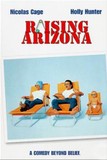
ArizonaThis screwy, surreal take on parenting just wouldn’t work in another state. The sweeping, empty vistas of The Copper State help to bring the characters sharply into focus, and with hardly anything else in sight, you start to believe the Coens’ own special brand of insanity. Sometimes the heat just gets to you. But if you’re in the mood for something more classical, see John Ford’s legendary Stagecoach or contemporary favorite Tombstone.
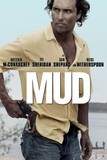
ArkansasTwo worlds of Arkansas collide in Mud, the coming-of-age thriller starring Matthew McConaughey and directed by Little Rock-born Jeff Nichols. There’s the strip malls and condos and fleabait motels, places of humiliation and angst for our teenage heroes. Beyond that is the Mississippi River, a wide enclave where boats land in trees and people can disappear from the world.

CaliforniaStep outside into the California sunshine and you’ll be treated to America’s most varied landscape: Oceans and deserts, mountain highs and valley lows, Redwood forests and hidden lakes galore. Or stay in and launch a tech startup. Anything’s possible in California, and no movie exemplifies this ethos of possibility (to the extreme!) better than Point Break, the action-heist thriller from Kathryn Bigelow. Point Break may be set in the lower end of the state, but the movie shows off activities all Californians are familiar with, like surfing, skydiving, and lengthy gun pursuits on foot.
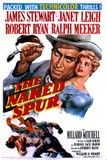
ColoradoOff we go to Colorado! While we would’ve liked to have gone with meme-launching Jeremiah Johnson, that rugged Robert Redford adventure was in reality shot in Utah. This leads us to The Naked Spur, the Oscar-nominated Western starring Janet Leigh and James Stewart, who’s tracking a murderer across the state. Director Anthony Mann fills the background with plenty of sky and trees, having shot on-location in Durango and Rocky Mountain National Park.

ConnecticutStatistically speaking, Connecticut is one of the most affluent states in the U.S., thanks to a history of strong manufacturing, maritime, and financial industries, and while it typically enjoys moderate weather, it does tend to get cold during Winter. Combine these two elements, and you basically have the recipe for Ang Lee’s The Ice Storm, a suburban melodrama chronicling a chain of events in two neighboring Connecticut families amidst Thanksgiving celebrations. Every character exhibits tragic flaws that are brought to bear over the course of the film, and though it’s not quite a flattering portrait of Connecticut life, The Ice Storm certainly has a thing or two to say about dysfunction in the lives of sophisticates in New England.
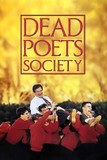
DelawareThe most famous Delaware movies, Fight Club and Goosebumps, weren’t shot in the state. Dead Poets Society was, though we must confess that the movie’s fictional all-boys prep school is actually set in Vermont within the story. This is an exception we have to make because so few other films have been fully shot in Delaware, despite Society‘s evidence that the state’s got some lovely pastoral outdoors. The movie even makes sitting in a small group of trees reading poetry in the dark look fantastic. So what are you waiting for, Hollywood?
FloridaRecent films Spring Breakers and The Florida Project have shown the highs and lows of Florida’s tourist economy and party atmosphere. Both are worthy runners up to Moonlight, a groundbreaking drama that had the honor of being the first all-black LGBTQ movie to win Best Picture at the Oscars. And it still makes those Florida beaches look great.
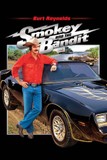
GeorgiaBeing the region’s main metropolitan center, there are a lot of movies set in Atlanta, especially since the past decade’s tax credits on film production have lured much of Hollywood to the East Coast. Enter an era before your Baby Drivers and Love, Simons and the films of the Tyler Perry dream factory, and hop in the car with Smokey and the Bandit. The road movie was shot at the height of the ’70s trucker movie craze and stars Burt Reynolds and Sally Field as a duo on the run from the law. It goes all over the state, including spots like Jonesboro, Cumming, and Helen.

HawaiiThere have been Fresh movies that show off Hawaii as a vacation/stalker destination (Forgetting Sarah Marshall), and even a recent one from the perspective of a local (The Descendants). But we’re making an exception to some of our criteria with this animated choice: Lilo & Stitch, which captures the island’s verdant flora, big waves, and laid-back culture, brah. Also, ELVIS. It’s an off-kilter choice for America’s far-out state, and was one of the last traditionally animated Disney movies to land with critics and audiences alike, before the medium mostly surfed away into the sunset.

IdahoOn first pass, it appears Napoleon Dynamite gives Idaho a bad rap. People are weird, quirky, or hopelessly clumsy. There’s nothing for kids to do but hurt themselves on ill-devised stunt ramps and learn dubious hip-hop dance moves. But remember we all loved this movie for a reason. In the universe of Napoleon Dynamite, Idaho transforms into a goofball’s paradise, a carefree land where everyone saunters along in thrift-store clothing, tetherball rules, and tater tots — the great Idaho contribution — are things to be stuffed into pockets and truly cherished.

IllinoisJohn Hughes and his cabal of teenaged angsters and abandoned brats resonate, but Dan Aykroyd and John Landis are on a mission from God. Blues, car chases, and indoor sunglasses come together in a way like never before, and we have the state of Illinois and the city of Chicago (and its many outlying neighborhoods) to thank for that. As much a loving tribute to the Chicago blues scene as it is a comedy, Brothers also helped make Chicago a viable destination for filmmakers, since longtime Mayor Richard J. Daley had previously all but banned filming in the Windy City.
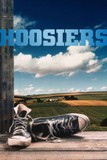
IndianaWhen Coach Norman Dale (Gene Hackman) quips, “Welcome to Indiana basketball,” in 1986’s Hoosiers, he might as well have left off the almost redundant “basketball.” Even the Massachusetts inventor of basketball himself, James Naismith, was once quoted as stating that “basketball really had its origin in Indiana,” and indeed the sport has become inseparable from the identity of the state. So, naturally, we had to pick the inspirational and iconic David Anspaugh (who also directed the similarly themed Notre Dame football flick Rudy) film about a small-town high school hoops coach who transforms his ragtag team into unlikely state champions. Inspired by true events, the film was shot on location in various places throughout the state, capturing the intensity of “Hoosier Hysteria” and highlighting the region’s natural beauty during the Fall and Winter seasons. It’s a tiny-town story with a message that connects in every corner of the country: we dream through sports.
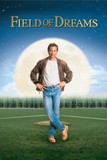
IowaConsidering their two most famous movies, the states of Iowa and Indiana would get along swell together as next-door neighbors — if only know-it-all Illinois weren’t separating the two. So for now, Kevin Costner will have to dream alone, guided by voices, making a baseball diamond in the corn field. This film also showcases other aspects of Iowa life, as Costner’s Ray Kinsella ventures to and from various locations throughout Dubuque and Farley, driving recognizable highways and making several stops. As Kinsella ultimately decides, “Maybe this is heaven,” and there’s not much higher praise you can bestow upon a place.

KansasEverybody defaults to Wizard of Oz for Kansas. But, when you think about it, the movie’s iconic line is about how they’re not in the state anymore. What kind of motto would that be? If you want to get a real sense of Kansas, ride along with the O’Neals (Ryan and Tatum) as they grift their way through the Sunflower State during the Great Depression. The towns of Hays and La Crosse, along with I-70, are the prominent locations.
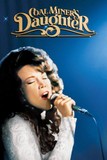
Kentucky“You’re lookin’ at country,” sang Loretta Lynn in her hit song of the same name. Coal Miner’s Daughter is a celebration of the country legend’s life, as well as her Kentucky roots, which are the subject of many of her greatest songs. Raised in abject poverty in a mining town of Butcher Holler, Lynn (portrayed by Sissy Spacek in an Oscar-winning performance) married at 12 and raised a family before embarking on a singing career. Though many of Lynn’s songs describe the joys, pains, and distinctive rituals of her upbringing in the Bluegrass State, she also injected a potent strain of feminism into the country charts. Coal Miner’s Daughter is the story of a woman who, even after achieving the American dream, never forgot where she came from.
LouisianaExpect authenticity when you come to Louisiana. Julia Roberts was nominated for the Best Actress Oscar for her part in Steel Magnolias‘ ensemble cast alongside Sally Field, Dolly Parton, Shirley MacLaine, Daryl Hannah, and Olympia Dukakis. While shaped by its New Yorker director and L.A. producers, Magnolias is a true-spoken piece of death, new life, and companionship. Looking for runners-up? Beasts of the Southern Wild: Down on the bayou, for the way things are now. The Big Easy: New Orleans come to life. And all it took was 1989’s Sex, Lies, and Videotape from Baton Rouge to kickstart the American independent movement into the ’90s.
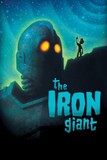
MaineMaine’s most famous citizen, Stephen King, hasn’t cast his homestate in the brightest light — unless you’re into killer clowns, cursed antique stores, and portals into the demonic realms. For more conventional movie tourists, take a look at The Iron Giant. Yes, it’s the other animated movie on this list besides Hawaii’s, but Brad Bird’s sweetly nostalgic adventure shows off Maine’s tree-lined highways, pristine lakes, and enough untouched natural landscape to hide your favorite giant robot from outer space.
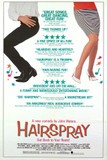
MarylandDiner‘s a Baltimore classic, an exploration of young people transitioning to full adulthood. But if you’re craving midnight Maryland madness and a lot of it, engage with the works of the state’s greatest living treasure: John Waters. Hairspray is Waters’ most accessible movie (see how it lives on with remakes and Broadway stagings) without sacrificing his signature twisted wit. All his other movies are also set in Maryland, so take your pick: Pink Flamingos, Multiple Maniacs, Polyester, Cry-Baby…they all represent steaming Fresh slices of Americana unlike any other.
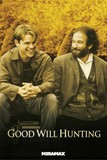
MassachusettsIt’s difficult to pin down just one movie for a state as rich in national history and with as much bracing attitude as Massachusetts. However, as far as modern portraits of the state are concerned, one could do much worse than Gus Van Sant’s Good Will Hunting. Written by Massachusetts natives (and childhood pals) Matt Damon and Ben Affleck, Hunting follows a South Boston savant who rejects higher learning, much to the dismay of everyone in his life. The hometown familiarity shines through in Damon and Affleck’s tautly crafted script, which effectively illustrates the college town atmosphere of Boston proper (more than 40 colleges exist in and around the city) and contrasts it with the Irish-flavored working class neighborhoods of Southie. Critics and audiences also appreciated the authenticity of the film, and the two longtime friends walked away with Oscars for their screenplay. How do you like them apples? For the rest of Massachusetts, see The Fighter (shot on location in Lowell), and Manchester by the Sea, which was filmed in…actually, we don’t know where. You figure that one out.

MichiganSet and filmed in the Upper Peninsula between Lake Superior and Lake Michigan, Otto Preminger’s Anatomy of a Murder is lauded for being the best courtroom trial movie in terms of accuracy. Which makes sense since Anatomy was written by a Michigan Supreme Court Justice under a pen name. Most other major Fresh Michigan movies involve Detroit (Gran Torino, It Follows, Only Lovers Left Alive, Standing in the Shadows of Motown), though Michael Moore’s debut documentary feature Roger & Me took on the auto industry in Flint. Grosse Pointe Blank was a strong candidate to represent, but budget constraints allowed for only aerial footage to be shot in Michigan; the rest of the movie was filmed in Monrovia, California.
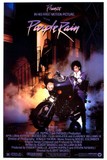
MinnesotaThere’s plenty of beauty to be found in the rural-set A Prarie Home Companion or North Country. But with a majority of the population living in the Twin Cities, we’re choosing the area’s most famous citizen: Prince, and his cheesy yet electric Purple Rain. Even after his death, the Minneapolis sound reigns on.
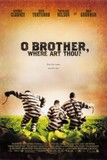
MississippiMississippi loves confronting and exploring its rich history through the movies. See: Mississippi Burning, Get on Up, Mississippi Masala, and My Dog Skip. But no movie rakes it all in, like a gambler pulling in his poker winnings with both hands, quite like O Brother. It’s bluegrass music, checkered race relations, train tracks and backroads and flowing whiskey — a grand comedic epic set in the sepia-toned sun.

MissouriJennifer Lawrence emerges from the Ozarks to find her father and prevent eviction from their home. For something a bit more out of the past, check out Robert Altman’s Kansas City, which explores the birth of the city’s namesake jazz scene in the 1930s.
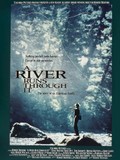
MontanaIt’s not outrageous to think a Montana movie is going to play up the intimacy of living in a small town and the magisterial natural beauty that likely surrounds it. A River Runs Through It, Robert Redford’s adaptation of the Norman Maclean’s autobiographical story, does exactly that. Set in Missoula, Montana, the film is Redford’s loving ode to the outdoors, and a further exploration of his favorite movie subject: family tension. Montana’s low population density gives ample uninterrupted space for shots of nature, and that keys in to the film’s most central image: men enjoying the sport of fly-fishing. Silent, stately, and introspective, Redford’s presentation of fishing is a perfect match to the subtle beauty of Montana’s wilderness. Redford also directed and starred in The Horse Whisperer, filmed primarily in Livingston and Big Timber. Essentially, let him be your guide through Big Sky Country.
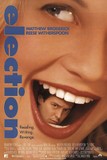
NebraskaGather around, my Children of the Corn, and let me tell you about the man Alexander Payne. So Nebraskan was he, that it were as though he were born kerneled from the cob, and he has made several of his movies here — including About Schmidt, Nebraska, and Citizen Ruth. Election came out during a spate of memorable high school movies (American Pie, Varsity Blues, Rushmore) and stood out for its homeroom twist on politics: Reese Witherspoon stars as an unopposed class president candidate (though not unopposed for as long as she would like), and Matthew Broderick as the teacher who goads a jock to run against her.

NevadaThe Hangover is the ultimate Certified Fresh movie for Las Vegas, featuring everything the world has come to know the place for: gambling, boozing, sex, and shotgun weddings. So great is the anarchic temptation of The Strip, it can often obscure the rest of Nevada. But a few movies have made earnest attempts to squeeze Nevada out from Vegas’ shadow: Desert Hearts is a taboo love story set out in the arid landscape, while California Split travels north to Reno (though it’s still about gambling).

New HampshireThe Granite State was chosen for this Zoe Kazan-starring, fantasy-tinged romance thanks to New Hampshire’s immaculate, highly filmable snow patterns. Other Fresh films shot here for its inviting landscape include John Sayles’ boomer reunion pic Return of the Seacaucus 7, and tender-hearted drama On Golden Pond, with Katharine Hepburn and Henry Fonda.
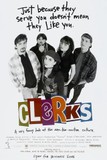
New JerseyNew Jersey native Kevin Smith famously spent nights filming his first feature in the same convenience store where he worked during the day, taking the aphorism “write what you know” to heart. Although filmed for just over $27,000, Clerks went on to make over $3 million in limited release, and kickstarted a whole series of films in the “View Askewniverse,” including Mallrats, Chasing Amy, and Dogma, with most of the action (naturally) taking place in Smith’s home state.
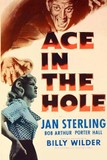
New MexicoKirk Douglas plays a demoted newspaper reporter suffering in New Mexico who stumbles upon a juicy story: a collapsed cave has trapped a man, and the longer he stays there, the more attention Kirk’s unscrupulous character gets. The elemental, near mystic arid landscape of New Mexico has drawn a multitude of filmmakers telling stories past (Silverado), present (Sicario), and future (The Man Who Fell to Earth).

New YorkDo the Right Thing may be centered on one street, in one borough, within a single city, but the clash and eventual unification of cultures seen here represent the basis of the country: a melting pot, where all can come and participate. Of course, New York’s big screen chroniclers have been many and varied, and no entry on the city would be complete without at least some mention of Woody Allen (Annie Hall, Manhattan), Martin Scorsese (Taxi Driver, New York, New York), or even King Kong.
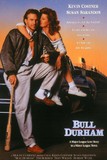
North CarolinaNorth Carolinians have an intense passion for sports (go Tar Heels!), and in 1988’s Bull Durham, they got one of the best sports films ever made. Kevin Costner stars in one of his best career roles as “Crash” Davis, an experienced minor league catcher sent down to the single-A Durham Bulls to coach up-and-coming pitcher “Nuke” LaLoosh (Tim Robbins), who’s receiving a different kind of education by local baseball groupie Annie (Susan Sarandon). Shot on location throughout North Carolina, Bull Durham showcased the southern state’s rustic towns, historic ballparks, and collective affinity for minor league baseball (no less than 30 teams are based in the Tar Heel State).
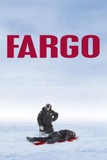
North DakotaThe 1996 neo-noir put the state on the map like no other film, and like it or not, that Minnesota accent will forever be associated with the border city of Fargo. Frances McDormand stars as Marge Gunderson, the pregnant chief of police in Brainerd, Minnesota hot on the trail of two murderous ex-cons (Steve Buscemi and Peter Stormare) wreaking interstate havoc thanks to the botched kidnapping of the wife of a put-upon car salesman (William H. Macy). In true Coens fashion, Fargo delivers the blackest of humor and the quirkiest of characters, punctuating the stark, snowy landscape – much of the film was shot in Minnesota, but some snowier scenes in eastern North Dakota – with flashes of ultra violence, because there’s nothing like a body in a wood chipper to jazz up those slow Midwestern winters.

OhioThe great Ohio export: intimate portraits of the working class. Kings of Summer, shot in Cleveland and Chagrin Falls and rustic corners of the state, is the new standard in Ohio coming-of-age stories. Edge of Seventeen tackles sexual identity in small-town Sandusky. Steven Soderbergh’s Bubble is an anthem for the odd blue collar worker, with soundtrack provided by Dayton legend Robert Pollard. And, finally, there’s genre-bending inside the underground comic scene with American Splendor.

OklahomaOklahoma! seems like the obvious choice, but they ought to rename it Arizona! since that film was, in fact, shot within The Grand Canyon State. Instead, stay gold with The Outsiders, Francis Ford Coppola’s coming-of-age drama filled with teen angst and featuring the hottest new actors (of the early ’80s) like Tom Cruise, Patrick Swayze, and C. Thomas Howell. Coppola fell so in love with Tulsa and greater Oklahoma that on his off-days he directed Rumble Fish, another local movie based on an S.E. Hinton book. If that doesn’t make you an honorary Okie, what will?

OregonThe lush landscape of the Pacific Northwest makes for some romantic cinematography, and the oft overcast winter months provide a prime backdrop for many melancholy tales. Though several films set in Oregon, particularly those of Portland auteur Gus Van Sant, take full advantage of one or both of these, Richard Donner’s The Goonies showcases the state by way of lighthearted adventure. Filmed on location in the port city of Astoria and along the Pacific coast, The Goonies tells the story of a band of adolescents who, faced with eviction from their homes, embark on a search for a legendary pirate treasure they hope will save their neighborhood. From the opening chase scene along the wet streets of Astoria to the craggy shores of Ecola State Park, this classic ’80s hit takes viewers through a green, rain-soaked Oregon like a drive down I-5.
PennsylvaniaNot only does Philadelphia count the Liberty Bell and the signing of Declaration of Independence and the Constitution among past glories, the city also produced one of the most iconic images from movie history via 1976’s Rocky. Already, you’re conjuring up images of Balboa climbing the museum steps, fist in air at the height of ascension, as the Bill Conti score swells on the soundtrack. A triumph for the working class — and Rocky came out on America’s bicentential, no less. If you’re looking to get out of town, try Wonder Boys and Me & Earl & the Dying Girl (both Pittsburgh), or Harrison Ford’s Witness, which goes all over the state.
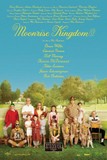
Rhode IslandWes Anderson’s youthful romantic adventure is officially set in catch-all New England, but those in the know see it as unmistakably Rhode Island. All the Rhody trademarks are here: ancient churches, open fields, and long shores — all to soothe the mind or (in the case of famous resident H.P. Lovecraft) drive one unspeakably mad. Rhode Island is a small state, but big names like the Farrelly brothers usually set some of their movies there. And you can’t go wrong with Jazz on a Summer’s Day, a blissful, wandering documentary staged at Newport Beach in 1958.
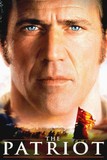
South CarolinaWe’re celebrating the 4th of July around these parts and you just came to the right state: South Carolina was the most eager to declare its independence, being the first state to ratify the Articles of Confederation. The Patriot takes place during this pivotal moment in history, depicting Benjamin Martin (Mel Gibson) and his story to avenge his son’s death by the hands of a British officer. The 101-day shoot entirely took place within SC, with the multiple battle scenes spread over Rock Hill, Fort Lawn, and a 200-year-old farm in Chester County. The 775-acre Historic Brattonsville also showed up quite a bit. If The Patriot celebrates American independence, it also pays tribute to Hollywood creativity: Who else would make a movie starring two Australians (Gibson and Heath Ledger as one of the sons) who nearly single-handedly turned the tide of the American Revolutionary War?

South DakotaSouth Dakota is probably best known for one of this country’s most recognizable landmarks, Mount Rushmore, but more deeply ingrained in the history of the state is its connection to the Native American tribes who populated it during the nation’s early days. As such, Kevin Costner’s directorial debut, the seven-Oscars–winning Dances with Wolves, excels at portraying frontier life on the plains, telling the story of a Civil War lieutenant (Costner) who becomes isolated at a deserted outpost and subsequently befriends the local Sioux population. The film is epic in scale, with long shots of the sprawling landscape, and it strives to shed some historical light on the native peoples who wove the first strands of South Dakota’s cultural fabric, making Dances with Wolves a worthy representative of the 40th state admitted to the Union.
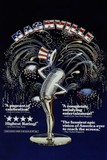
TennesseeRobert Altman’s rambling, ambitious, and brilliant Nashville attempted something nearly impossible – to summarize the state of the Union on the eve of its bicentennial through the city’s country and gospel music scenes. It succeeded with aplomb. With more than 20 lead characters (many of whom were required to write and sing their own songs), Nashville defines the term “Altman-esque,” and it captures the turbulent tenor of the mid-1970s and the hum of activity in the Music City. Filmed on location utilizing many of the city’s finest session musicians, Nashville is complex and epic in scope, but it’s also a fascinating look at the intersection between entertainment and politics.

TexasAs the saying goes, everything’s bigger in Texas, from its land mass to its imprint on the nation’s imagination. So if you’re only picking one movie to exemplify the Lone Star State, it better be huge, and Giant fits the bill on several counts. George Stevens’ tale of two generations of ambitious Texans is, at 201 minutes, epic in scope, and features several Hollywood titans (Elizabeth Taylor, Rock Hudson, and, in his last role, James Dean, to name just a few). It also captures the beauty of the state’s vast wide-open spaces, as well as the entrepreneurial resourcefulness of its people (the Benedict family graduates from ranching to oil riches), showing how the West was won – or at least tamed. Obviously, a state this massive can’t be embodied by a single film, and plenty of other movies have explored everything from Texas’ pioneer spirit (Rio Bravo) to its changing demographics (Lone Star) to its unique citizenry (Slacker) and customs (Friday Night Lights).
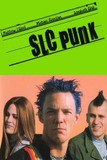
UtahSLC Punk may give a playful punch to the gut for the local homogeneous culture, but Utah’s big contribution to movies is outside the screen: Park City, a mountain overpass east of Salt Lake City, is home of Sundance. And Monument Valley, at the state’s southern end, is a couple square miles of picaresque red plateaus that have served as the backdrop for decades of Westerns.

VermontWhile shooting on location, Hitchcock was nearly crushed by a falling 850lb camera, which spooked the director enough to pack up and shoot on soundstages in Los Angeles. But before his near-death experience, Hitchcock filmed atop authentic premium Vermont dirt and grass, and it pays off. The screen explodes with autumn colors and leaves in those outdoor scenes, which tables well with the mannered murdery mystery/comedy the director attempts to tell. For an updated look of Vermont hillsides, take a look at 2003’s The Mudge Boy, which stars Emile Hirsch and won significant awards from LGBTQ groups.
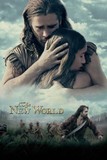
VirginiaVirginia has a storied history. It was a major Civil War front, it erected the Pentagon, it split itself into two states after a revolt (creating West Virginia), and was birthplace of the massive resistance (the last gasp policy resisting racial desegregation). But the most popular story to come out of Virginia? By far it must be the one of Pocahontas, a tale of love, loyalty, and tragedy. For The New World, director Terrence Malick took great pains to recreate the living conditions of Jamestown in the early 1600s, the home village of Pocahontas, and her falling in love with John Smith, whom she saved by jumping in front of the gun during his scheduled execution. Actually, it’s somewhat of a literary conceit that Pocahontas fell in love with Smith but that’s probably why her story captures our interest and imagination today: it withstands factual interpretation and poetic license.

WashingtonSingles is a time capsule of a distinct moment in pop culture history, when the pop music universe seemed to revolve around the grunge bands of Seattle. In chronicling the ambitions and romantic foibles of a group of Gen-Xers (including Bridget Fonda, Matt Dillon, and Campbell Scott), director Cameron Crowe also provided a handy travelogue of Washington’s largest city. Featuring the distinctive coffeehouses of Capital Hill, the buzz of activity in Pikes Place Market, and the raucous, exuberant sounds of Soundgarden, Alice in Chains, and Pearl Jam (Eddie Vedder turns in a pretty hilarious cameo, and the soundtrack went platinum), Singles remains a loving tribute to one of America’s most idiosyncratic cities.

West VirginiaIn the annals of one-and-done directors, there are few more legendary than Charles Laughton and his single effort, the haunting Night of the Hunter. Shot partially in Sistersville, New Martinsville, and Moundsville, the movie stars Robert Laughton as a killer man of faith, in an expressionist drama that has influenced the likes of Malick and David Lynch. For something steeped more in WV history, there’s John Sayles’ Matewan, which dramatizes a deadly coal miners’ strike in 1920, while documentary The Wild and Wonderful Whites of West Virginia explores the state’s Appalachian outlaw culture.

WisconsinThe unintended laughs (and pains) experienced by struggling Milwaukee filmmaker Mark Borchardt are the subject of this documentary, which incidentally earned rave reviews from critics – even if Borchardt’s movie-within-a-movie, a short film entitled Coven, doesn’t. And though it’s set in the land where people wear hats shaped like Swiss cheese, this hilarious, affecting film is really a microcosmic look at the blood, sweat, and tears shed by that ever suffering creature of art: the independent filmmaker. Cheeseheads, be proud!

WyomingThe town and farmstead where most of this classic ‘stranger comes into town’ Western takes place was built specifically for Shane – and then demolished after the shoot. Makes sense considering Wyoming’s the 10th largest state in America, but the least populated overall. They have the space and time to do it! Wyoming is where the Rocky Mountains and the Great Plains collide in dramatic fashion, and cinematographer Loyal Griggs won the Academy Award for capturing it in dusty Technicolor. Let’s not forget Close Encounters of the Third Kind, featuring the Devil’s Tower plateau formation outside Moorcroft that ethereally beckoned Richard Dreyfuss. That alien mother ship slowly flying over stone monolith has become one of modern cinema’s most iconic images. Meanwhile, Brokeback Mountain would seem like an obvious choice, but the only thing actually shot in Wyoming was the background for the theatrical poster; the entire movie was shot in Canada.
Check out scenes from all 50 films below.